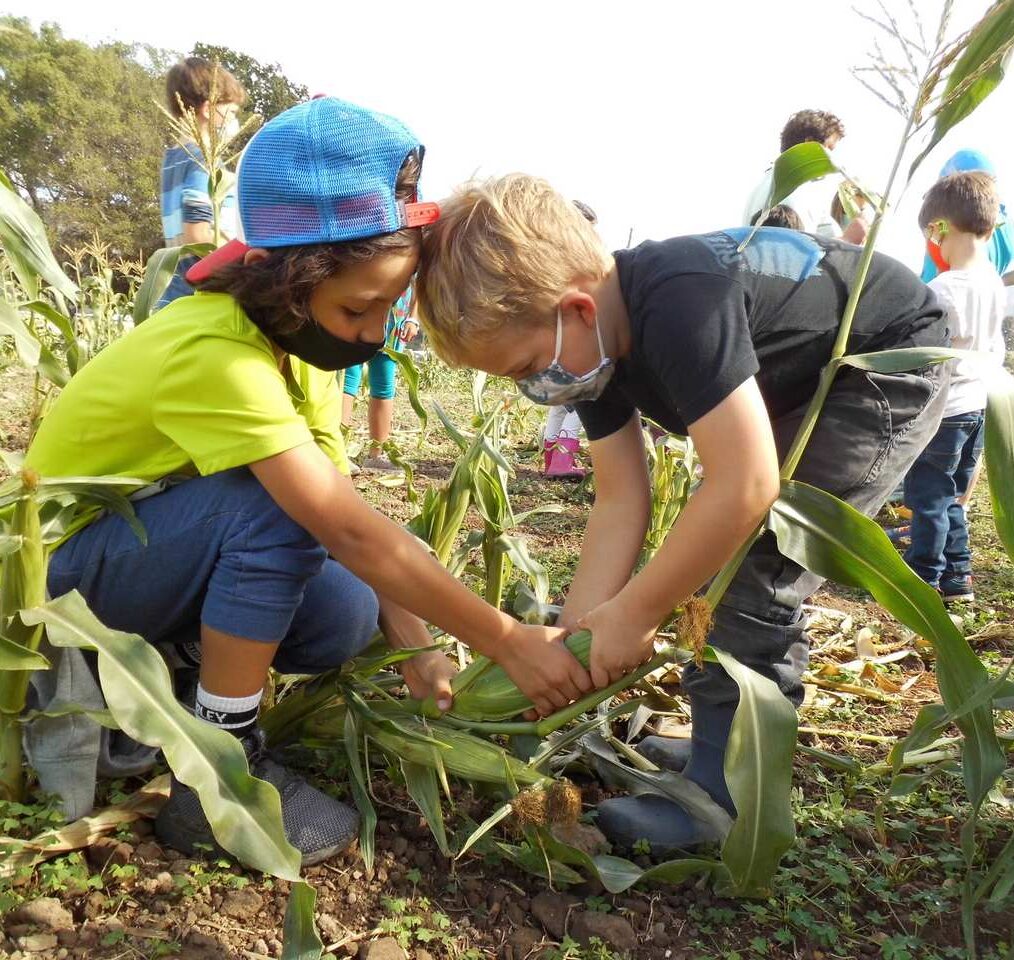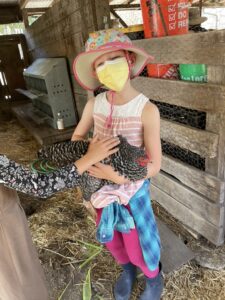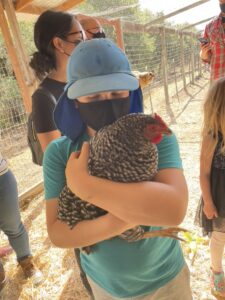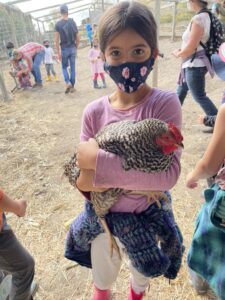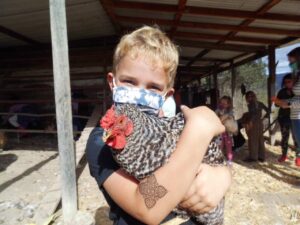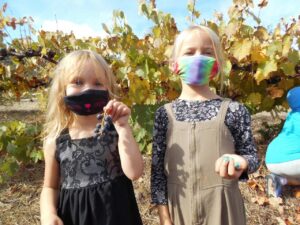 Mount Madonna School (MMS) second grade and kindergarten students’ year-long study of “where things come from” was front and center last week, as students learned about food production and toured and “tasted” their way around Live Earth Farm, a commercial organic family farm in Watsonville.
Mount Madonna School (MMS) second grade and kindergarten students’ year-long study of “where things come from” was front and center last week, as students learned about food production and toured and “tasted” their way around Live Earth Farm, a commercial organic family farm in Watsonville.
“I learned that not all grapes taste the same,” shared student Katherine Nissly. “Some are for making juice and some are just for eating.”
“As we explored the fields and hen house, petted ponies, a pig and a cow and harvested grapes and corn, the children experienced their connection to Mother Earth firsthand,” commented kindergarten teacher Hema Walker.
“Food comes from farms,” said student Eden Ray. “The farmer has to plant the food and they water it every day. Even some animals help get food, like milk comes from a cow.”
every day. Even some animals help get food, like milk comes from a cow.”
“I got to pet the ponies,” shared student Abigail Gelsinger. “They felt fluffy.”
One kindergarten student remarked that his favorite part of the trip was going with the second grade “big buddies.” In addition to this community-building, mentoring opportunity, the trip also provided second grade students with an experiential dive into curriculum study units on community and services, pollination and natural habitats.
 “When we walk through the beautiful farm and hear about sustainable growing practices from our educational guide, the students are able to tie these concepts together,” commented second grade teacher Prema Gammons. “Students also see pollination in action and animal habitats up close. It allows them to see the benefit of growing the foods they eat on a smaller scale with attention to the environment.”
“When we walk through the beautiful farm and hear about sustainable growing practices from our educational guide, the students are able to tie these concepts together,” commented second grade teacher Prema Gammons. “Students also see pollination in action and animal habitats up close. It allows them to see the benefit of growing the foods they eat on a smaller scale with attention to the environment.”
“Students came to understand that many of the food items bought in grocery stores, even pizza and sandwiches, originate with ingredients that grew on a farm somewhere!” said Walker. “To connect our farm adventure to the broader curriculum, I utilize several approaches and resources, including reading farming and food production stories; students’ reflections on their farm visit experience through stories and crayon drawings in their journals, and hands-on, by caring for our own class garden. Students’ learning is enhanced by nurturing their understanding of nature’s cycle by providing plenty of time for exploring outdoors and creating original identification and life cycle books.”
“Bread comes from the soil and the ground that makes it grown,” shared a kindergartener in a dictated story in their drawing journal. “After a few weeks the farmer plants the seeds and then miracles happen. The seeds grow into green stalks of grass. And after a few months they grow into golden flowers. After a few months when the golden flower is done the farmer comes and cuts down the wheat. After he brings all of the wheat seeds inside, you have to make flour. You take the seeds and squish them up, and then once they’re flour you bake bread with them. Then you eat the bread. It is better than cupcakes!”
“Farms are important because they give us our food,” shared student Benjamin P. “My favorite part of the field trip was the chickens.”
###
Nestled among the redwoods on 375 acres, Mount Madonna School (MMS) is a diverse learning community dedicated to creative, intellectual, and ethical growth. MMS supports its students in becoming caring, self-aware, discerning and articulate individuals; and believe a fulfilling life includes personal accomplishments, meaningful relationships and service to society. The CAIS and WASC accredited program emphasizes academic excellence, creative self-expression and positive character development. Located on Summit Road between Gilroy and Watsonville. Founded in 1979.

